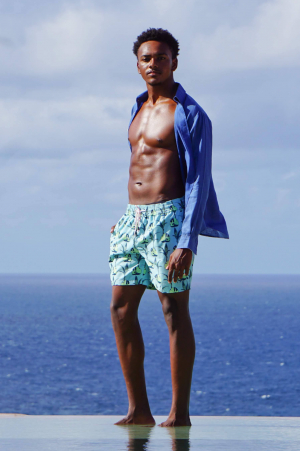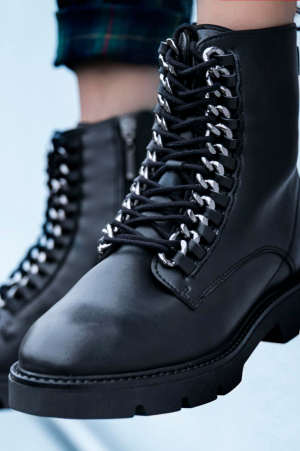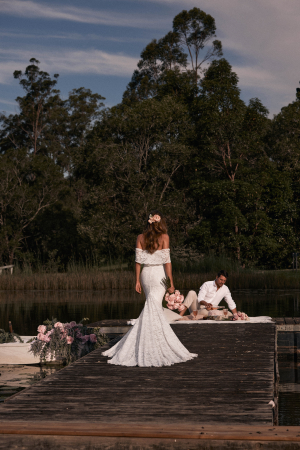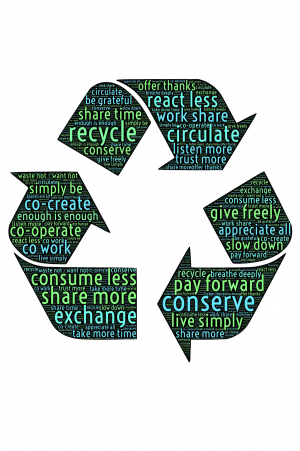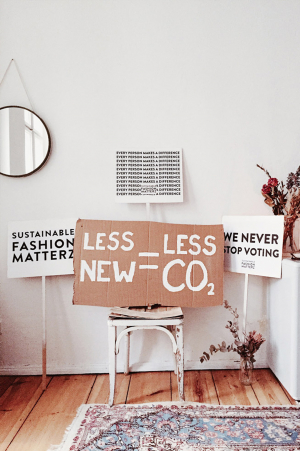The COCONUTS season: Pink House Mustique's most sustainable swimwear
Are you waiting for the summer season for a nice swim? The wait can be long, but Pink House Mustique is ready with its newest sustainable swimwear collection for men and kids.
Stepping into Vegan Footwear? The V.GAN way
Whether you started the year with Veganuary and want to get fully into veganism or you just want to find an animal-friendly alternative for your shoes, V.GAN could be the way.
Peaches Pearl: Grace Loves Lace's New Eco Wedding Dress
Leading Australian bridal giant, Grace Loves Lace, is ready to launch its new eco wedding dress on the sweetest day of the year, Valentine's day.
Ditch Bad Habits And Shop More Consciously In 2022
The festive season is over and the first month of the year is a time of mindfulness and recuperation. Still, many Brits are spending valuable time on the web looking for new outfits to only wear them once.
Sustainable Labels to Upgrade Your Wardrobe in 2022
The choices are endless when it comes to vegan and sustainable fashion. Whether you are looking for a cool slogan t-shirt, cruelty-free faux-leather shoes, or a stylish dress to leave everyone speechless at the next gala dinner there are plenty of fashion brands to choose from.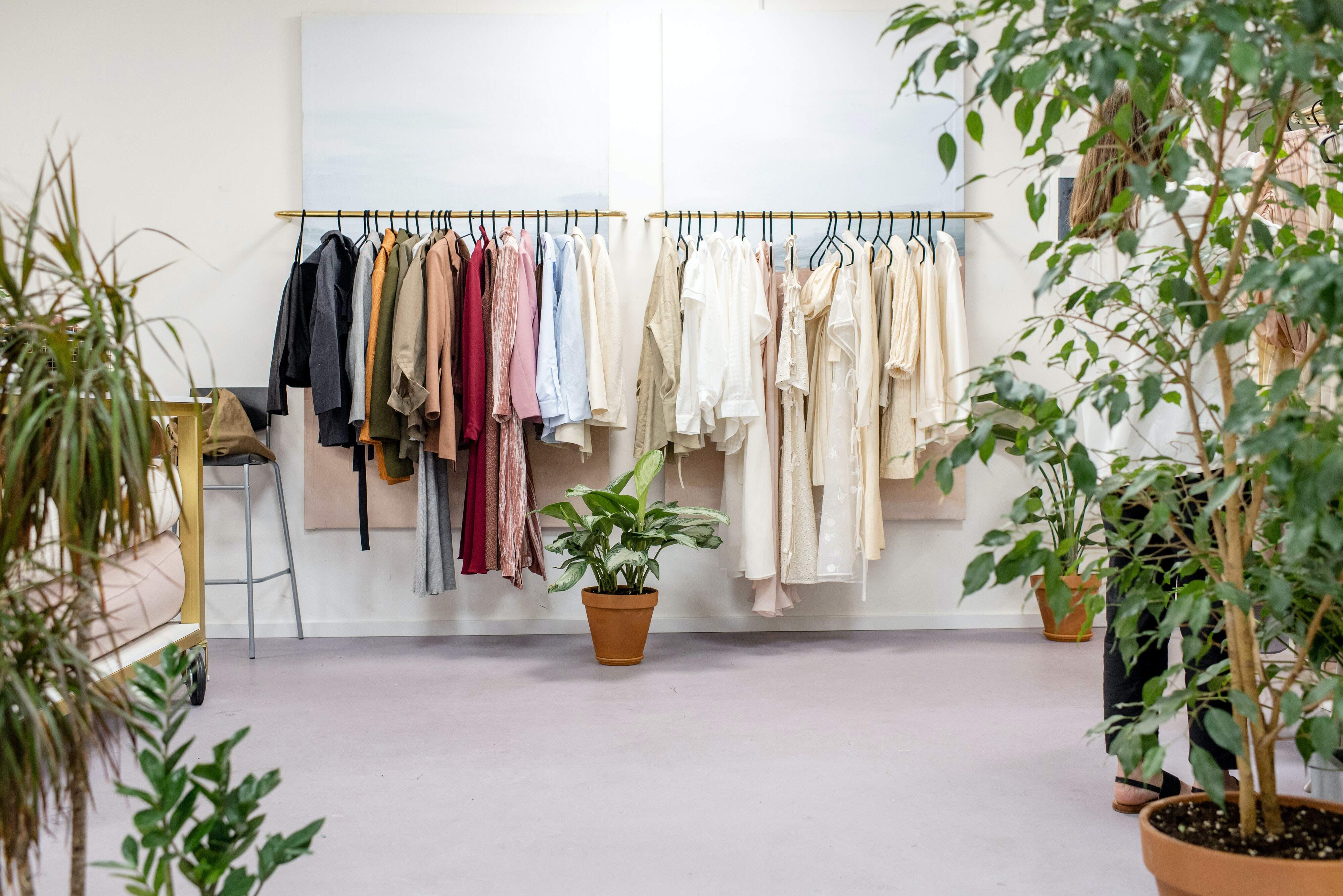 Ph. Ksenia Chernaya, Pexels
Ph. Ksenia Chernaya, Pexels
You can easily keep up with the latest fashion trends or find the one-of-a-kind garment made just for you thanks to all the sustainable and vegan fashion brands out there.
Nowadays sustainable fashion is not something new or rare, yet everyone seems to think it is very hard to find. The proof: here are some brands to have on your list for sustainable fashion.
Birdsong
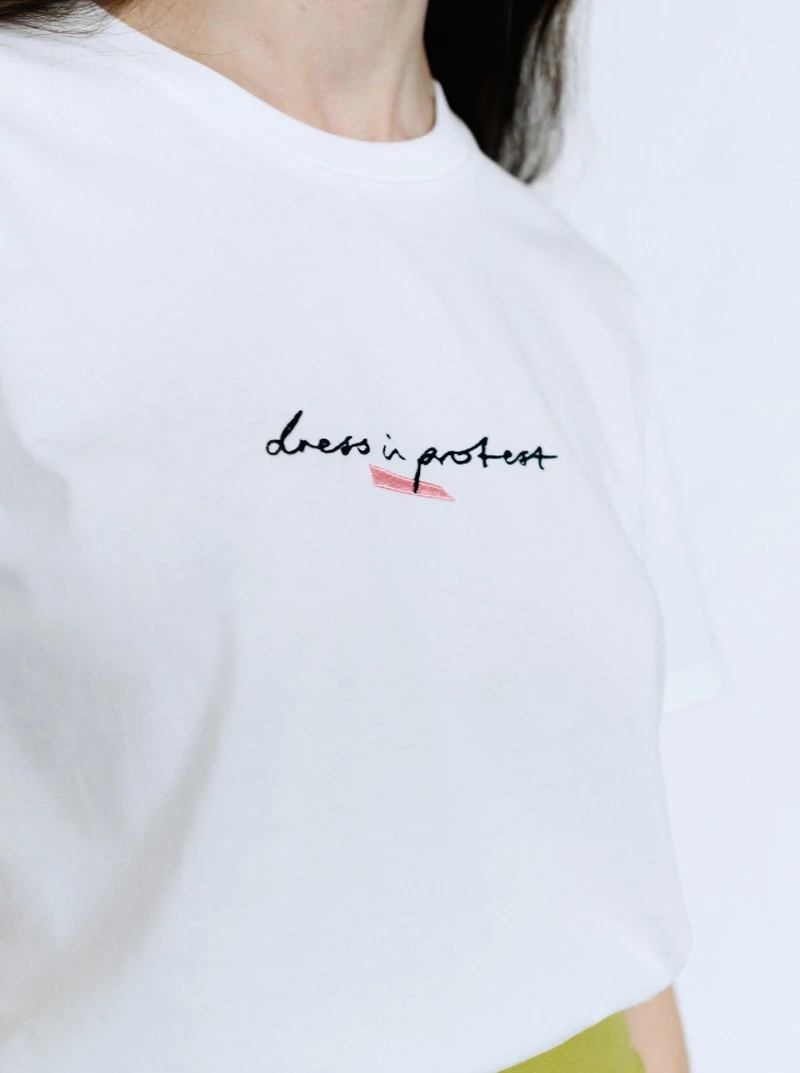 Source: Birdsong
Source: Birdsong
More than just an ethical and sustainable fashion brand, Birdsong is a social enterprise. A brand that wishes to revolutionise the way we produce and consume fashion. The slogan 'dress in protest' is meant to raise awareness of the fast pace of the fashion industry and the desire to follow trends. Birdsong designs clothes for remarkable women, but are also designed by remarkable women. The fabrics used are either ethical, sustainable or reclaimed alongside the use of eco dyes. It is all about finding that unique garment that makes you feel empowered. Their collection is unlike anything you will find on the high street: "it’s about thoughtful clothes in bright colours, edgy silhouettes and original prints made from natural fabrics."
Fanfare
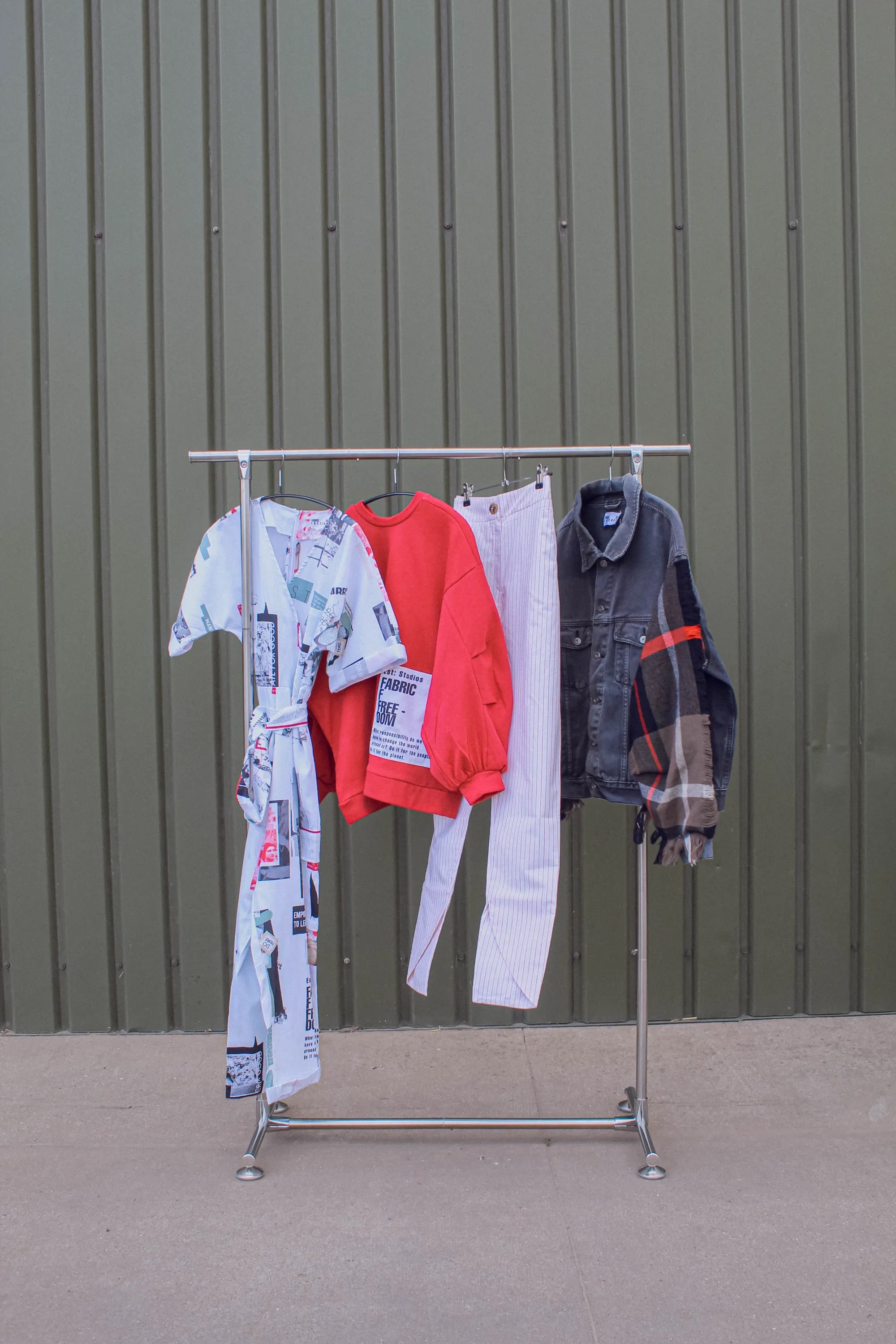 Source: Fanfare
Source: Fanfare
The brand is built on the foundation of ethics and sustainability. Their goal is to popularise circularity in the fashion industry and change the way people buy, wear and consume clothing. With upcycling at the heart of the label’s philosophy, the Fanfare team manages to transform vintage pieces into contemporary designs by repurposing existing materials through various textile cutting techniques. In addition to being entirely plastic-free, Fanfare is made from sustainable materials and is certified by OEKO-TEX and GOTS.
“Our hope for the future is that we can change the world around us and become a catalyst towards powerful social good and new models of consumption.”
Lucy & Yak
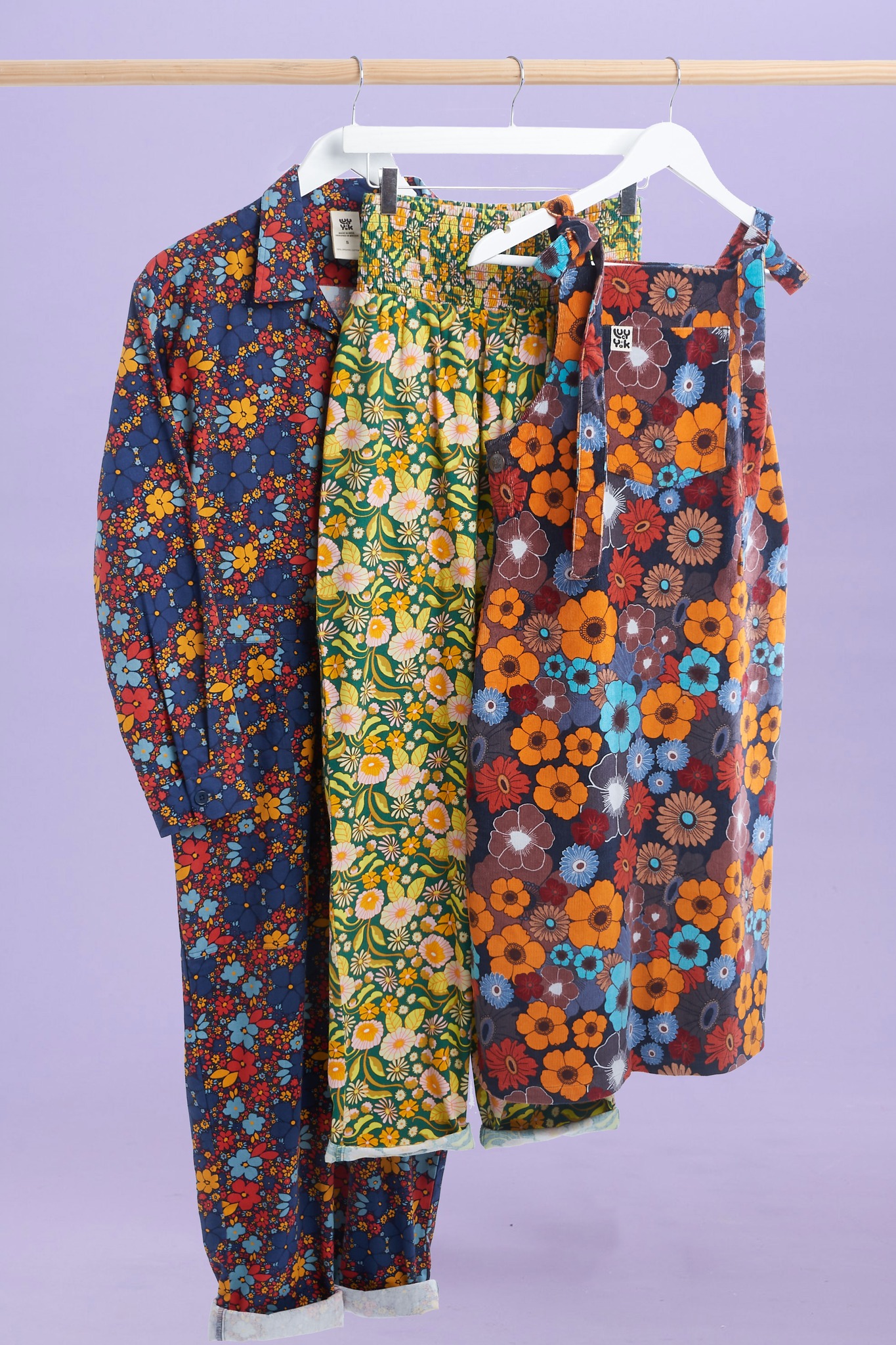 Source: Lucy & Yak
Source: Lucy & Yak
Lucy & Yak is an independent, ethical, and sustainably made brand, committed to preserving the environment and society. Every item, from boilersuits to colourful dungarees to cropped sweatshirts, is made with organic fabrics and manufactured in their factory in North India, where workers receive four times the minimum wage for the state. They use 100% recycled and biodegradable postage material and stationery to distribute their products. And if that was not enough to get you hooked on the brand let me tell you that they also have a Depop shop. To ensure all stock gets sold and demonstrate that sustainable clothing can be affordable, any flawed piece is advertised at a discounted price on Depop.
Indigo Luna
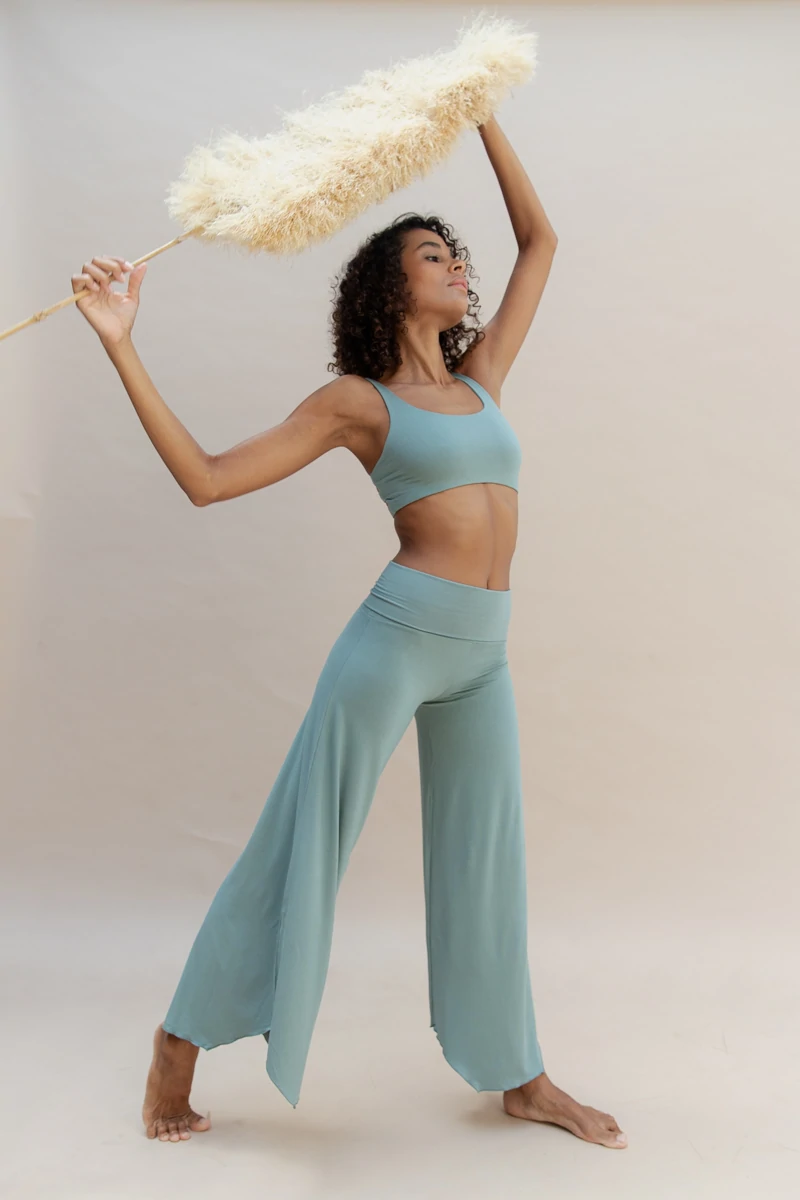 Source: Indigo Luna
Source: Indigo Luna
A small family-run brand focused on producing good quality products created using eco-consciousness and sustainable manufacturing practices. A yoga and swimwear line, Indigo Luna is handmade in Bali by women-owned and operated factories. Using natural fabrics and natural dyeing techniques, the rich, earthy colours come from various plant materials such as indigo leaves, mango leaves, Indian almond leaves and Indian redwood bark. Be sure to keep yourself updated with the brands newest addition, because their collections are purposely created in small, sustainable runs so they can run out of stock and avoid wasting any materials.
Ninety Percent
 Source: Ninety Percent
Source: Ninety Percent
Can you guess where the name might come from? Ninety Percent is a London-based sustainable womenswear label that shares 90% of its profit between charitable causes. With the purchase of their products, the brand asks its customers to pick which charity they would like to support. The pioneering business model, Ninety Percent has created, strives to have a different approach to the fashion industry. Their collection includes a variety of luxury basics that elevate the everyday, such as well-cut organic cotton sweats, detailed jersey staples and comfortable tops made from soft TENCEL.
“We don’t believe in short-lived trends and hope that once you have finished with your Ninety Percent garment you’ll pass it on for somebody else to love, too”
Have you fallen in love with the world of sustainable fashion? There sure is a lot to fall in love with. From the colourful and bold garments to the minimalistic and sophisticated high street-like collections. They all share the same mission: to be good for you and good for the planet.
A NA-KD-clear Example of Climate Action
Pollution and climate change is the hefty bill planet Earth pays for our wardrobes. Thanks to the example of sustainable fashion brands like NA-KD, we know that a global action plan is possible.
 Ph. hello i m nik, Unsplash
Ph. hello i m nik, Unsplash
Multi-tasking and multi-targeting, this is the climate action plan set and run by NA-KD. The daunting mission has many green goals and it is still achievable.
Fashion And The Environment: The Facts
The changes experienced by the environment are tangible and, most of all, global. The public attention is all on the main actor in today's climate disruption: fashion – or better – fast fashion.
With the trends coming and going and the pressure to follow them, fast fashion has provided the mass with an endless variety of always fresh clothing at reasonable prices. The price tag might be low, but the consequences on the ecosystem proved not to be so light and for many different reasons.
From a consumer point of view, the fast-fashion temptation led to more purchases which indirectly lowers down the life span of our clothing and causes more textile waste. Numbers clarify the state of facts: in Europe1, for example, people buy 26Kg of new clothing and discard an impressive 11Kg every year. Sales have been increasing by 40% since 1996 but, on the other hand, the EU fashion industry has not been able to keep up with fabric refuses as just 1% of the textiles was recycled for clothing due to technological issues.
If we are guilty of overconsumption, many brands lack sustainability in their production. Indeed, every step in fashion manufacture can be deemed responsible for greenhouse emissions, water pollution and land degradation. To break down the process, these phases are sourcing new raw materials, processing and producing new clothing, packing and shipping goods. As we will see shortly, NA-KD focuses on each one in its ecological journey toward a climate-neutral production by 2025.
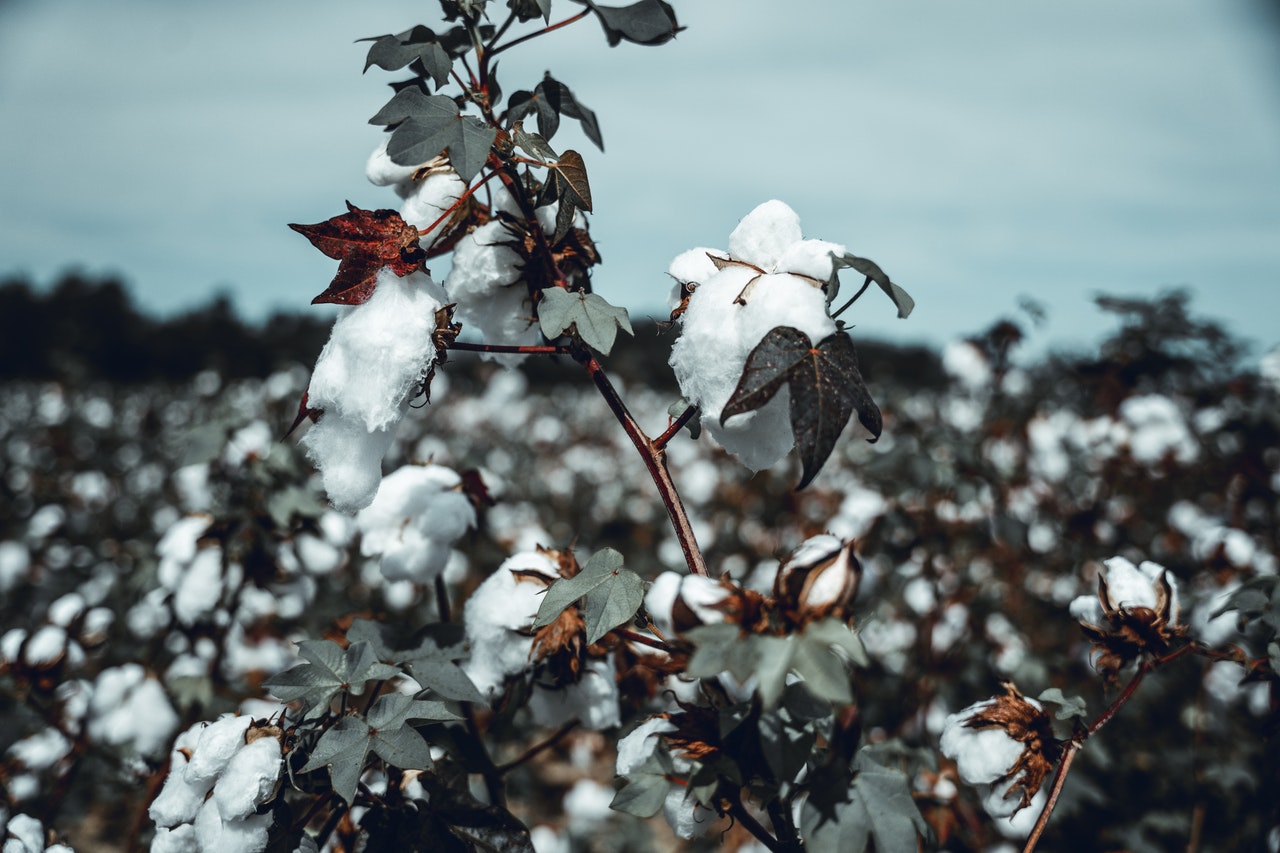 Ph. Crsten Vollrath, Pexels
Ph. Crsten Vollrath, Pexels
Present on the shelves for 24%, cotton is a very common natural fibre in this industry, yet it is the least sustainable material. Its production involves considerable consumption of water for irrigation and land: alone, 1Kg of cotton needs between 10,000 and 30,000 litres of water depending on the geographical region2. 1 cotton t-shirt equals 2,500 litres of water!
Furthermore, the remaining water sources are polluted by pesticides and insecticides employed in cotton cultivation, dyes and chemicals from clothing and jeans processing, and microfibres. Although small, microparticles, in the long run, pollute water basins and oceans ending up putting marine fauna at severe risk. 0,5 million tonnes of plastic microfibres – that is 35% released in the environment – come from washing synthetic clothes. Again, one straightforward example taken from daily life will wake you up: 1 laundry of polyester clothing creates 700,000 microplastics3 going down the water pipes.
 Microplastics found in Mirissa Harbour, Sri Lanka. Ph. Soren Funk, Unsplash
Microplastics found in Mirissa Harbour, Sri Lanka. Ph. Soren Funk, Unsplash
Even before we can put our hands on some brand-new clothing, more pollution comes along. Bringing fashion goods to distribution sites all over the globe translates to material waste and CO2 emissions through packing and shipping. In total, on the shoulder of the fashion industry, there is 10% of the global carbon emissions. The analysis run by McKinsey states that the amount reached 2.1 billion metric tonnes of greenhouse gases in 2018, foreseen to jump to 2.7 billion metric tonnes by 2030 with no drastic changes are taken.
The NA-KD Green Example
 NA-KD Reborn, a collection made of more sustainable materials
NA-KD Reborn, a collection made of more sustainable materials
Switching to a greener production may seem an epic deed. Indeed, it is not easy and requires a multi-tasking approach. NA-KD carbon-neutral journey is an example we wish many companies will study and copy for the future. But what is so special about it?
The difficulties lie in the disparate production phases and the many actors involved from start to end: suppliers, brands, delivery companies, retailers and, finally, consumers. NA-KD's plan tackles every source of pollution and liaises with all the entities working in the industry and/or involved.
The brand, born in 2016, is now distributed in 50 different countries, no wonder NA-KD feels the urge to act for the better. The label launched its first sustainable line in 2019 and, by 20254, it aims to:
• halve CO2 emission per product,
• use 100% sustainable materials,
• climate-compensate shipping (by investing in wind power),
• stop any non-sustainable production by 2025,
• reuse or recycle 100% of packaging material by 2025,
• reach a completely transparent supply chain (for 80% of the production),
• fund sustainable initiatives
To reduce its footprint, NA-KD has switched to renewable energy and studied to reduce its carbon footprint caused by transport, while supporting its partner to change for renewable alternatives, have better use of water and more efficient treatment of chemicals. The brand's focus moves then to materials. The first goal was to use 100% more sustainable cotton for its denim by 2022 and have all products made in sustainable materials by 2025. To make this possible, NA-KD informed its purchasing department to make sensible choices; looked for organic and recycled cotton; implemented its certificates, and found new suppliers sharing the same eco-commitments. Having a transparent supply chain and clear communication with the public about sustainability and production are part of this green journey, as well as good practices for every business.
After tackling the problem connected with sourcing, manufacturing and distribution, NA-KD took care of the last but equally important piece in this puzzle: you, the consumer. Fashion consumers feel every day more conscious about the environment and the active role they play through their decisions. The brand's call to action emphasises the love for clothing: how to take care of them and so prolong their life and quality. The #SoMe campaign wants to accompany you through an educational journey, at the end of which you will adopt sustainable behaviours.
Loving your outfits, at some point, will bring you to pass this love onto someone else. NA-KD circular program supports the circularity models by rewarding you with a discount for every return piece of clothing. While you can give back, you can find new discoveries in the pre-loved marketplace section on the NA-KD website.
Although hard and ambitious, climate action is achievable in the fashion industry. The NA-KD plan shows this is a matter of organisation, time, strong commitments and collaboration. Only when all parties will weigh their actions and understand the right things to do, fashion will be finally greener and we hope soon.
Read more about NA-KD’s sustainability commitment and discover its sustainable and pre-love ranges online.
Sources: 1, 2, 3, 4.
How Sustainability Promotes Climate Positivity
Climate change is real and happening right now, right in front of everyone’s eyes. Hence, taking action is essential if you want to see the planet better.
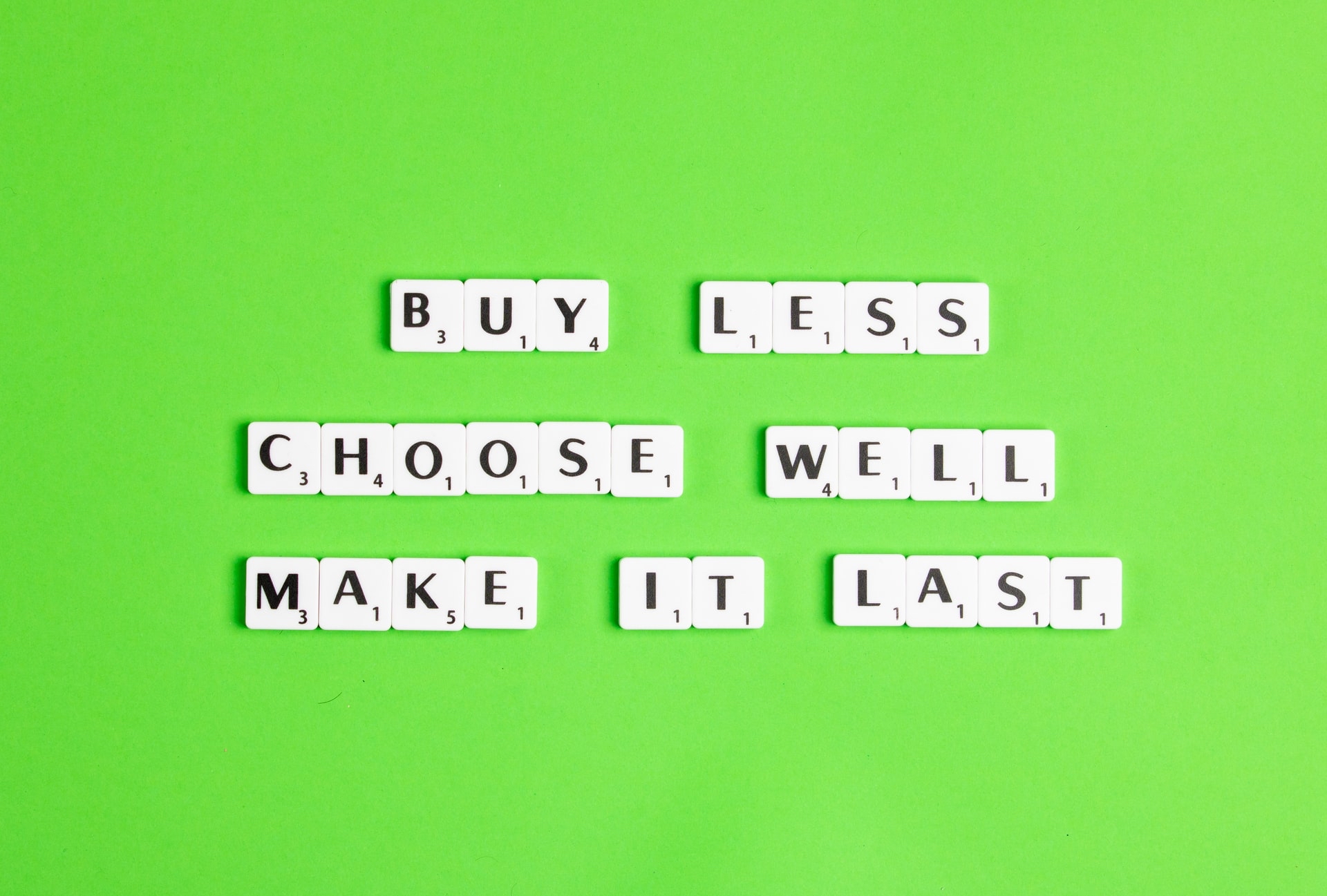 Ph. Edward Howell, Unsplash
Ph. Edward Howell, Unsplash
Sustainability should be the new normal. If this should be our approach to fashion, climate positivity will ensure that there is something to hope for in the future.
Climate change is amongst us and should be tackled immediately. For better days to come, we must look at the broader picture: the agenda of how sustainability promotes a better environmentally friendly life for all and, particularly, how to create a change capable of adapting to all lives.
Climate Positivity
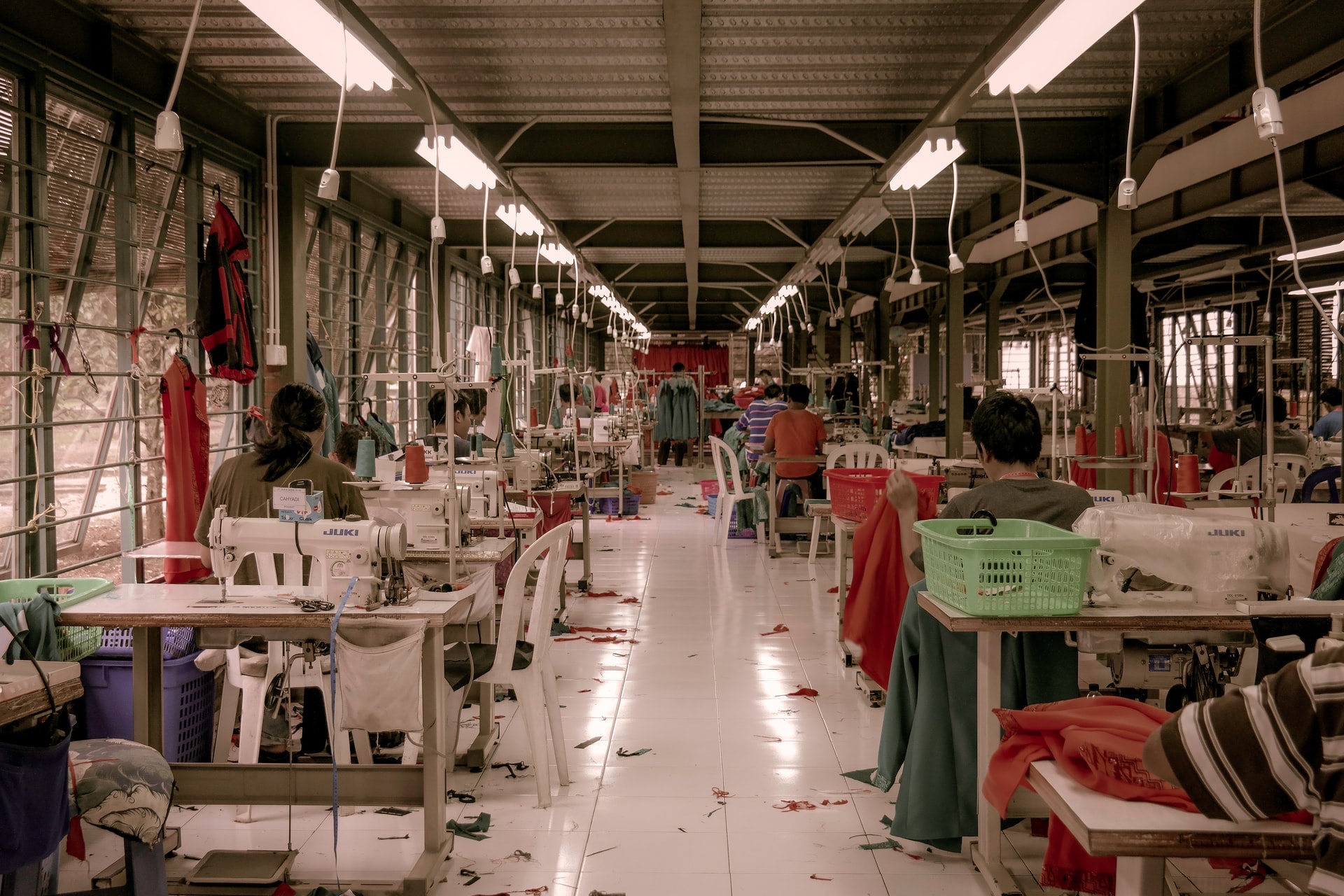 Ph. Rio Lecatompessy, Unsplash
Ph. Rio Lecatompessy, Unsplash
Climate positivity helps to minimise climate change while also promoting a positive approach in our society. Seeing a switch and aiming for a difference demonstrates a feeling of dedication. It embraces new sets of options and challenges in the hopes of improving the community, our society, and the ecosystem as a whole, so climate change will soon cause less damage. Eco-friendly, recyclable, and greenwashing are all keys to promoting climate positivity.
Sustainability And Us
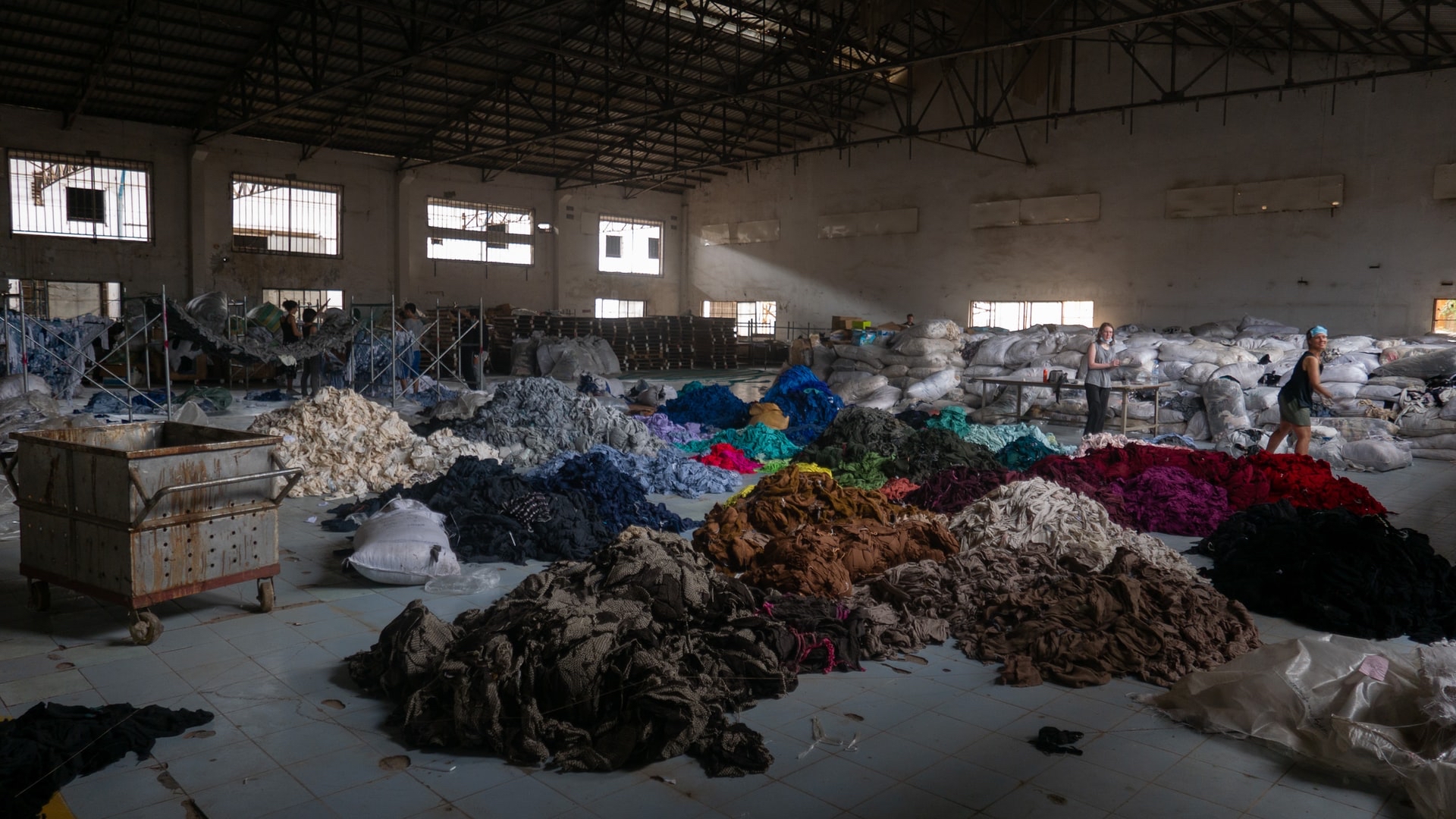 Ph. Francois Le Nguyen, Unsplash
Ph. Francois Le Nguyen, Unsplash
As people of the world, we all have the power to make valuable changes in our lifestyle; it just requires simple knowledge and awareness of what has been affected: people's livelihoods, our communities, and current attempts to control the climate change impact.
When it comes to sustainability, it is frequent to hear about it but we have no idea about how it is made, where it comes from, or what the day-to-day manufacturing process entails. Durable development should encompass more than just crochet, knitting, and locally sourced materials; it should also include a thorough understanding of history, care, and the work process. To create something high-quality, resistant, and long-lasting, assuring that future consumers will only have one job: to care for their garments, which includes caring for the biosphere.
Sustainability is about more than just keeping the ecosystem clean and safe for everyone; it also recognises the importance of ideals like renewal growth and diversity, as well as striving for greater social justice and equity. “Doing nothing or doing just enough is not going to cut it. We have to act in this decade to avoid the most severe environmental and socioeconomic effects of a changing climate,” said Dickon Pinner, who is the senior partner and global leader of McKinsey & Company’s Sustainability Practice.
The process will be seen if you look at the future profit; in the end, you only have a successful income if you have reliable consumers. Sustainable living expands every day, and consumers grow and adapt to a more positive lifestyle; therefore, change and evolution are required.
The beauty of seeing different kinds of clothing is the beauty of the world of fashion, and everyone wants to be a part of a trend or a craze. However, many fashion brands are on the verge of wreaking havoc on the ecosystem by employing fast fashion, low-wage labour, and hazardous production methods. Why is it wrong? Delilah Smith, who has spoken on fast fashion's impact on the environment, said, “A fast-paced model requires fast-paced production, and unfortunately, quicker production gives way to an increase in environmental damage.” Therefore, these companies make and distribute their products is neither safe nor equitable.
Consumers: The Key To A Sustainable Lifestyle
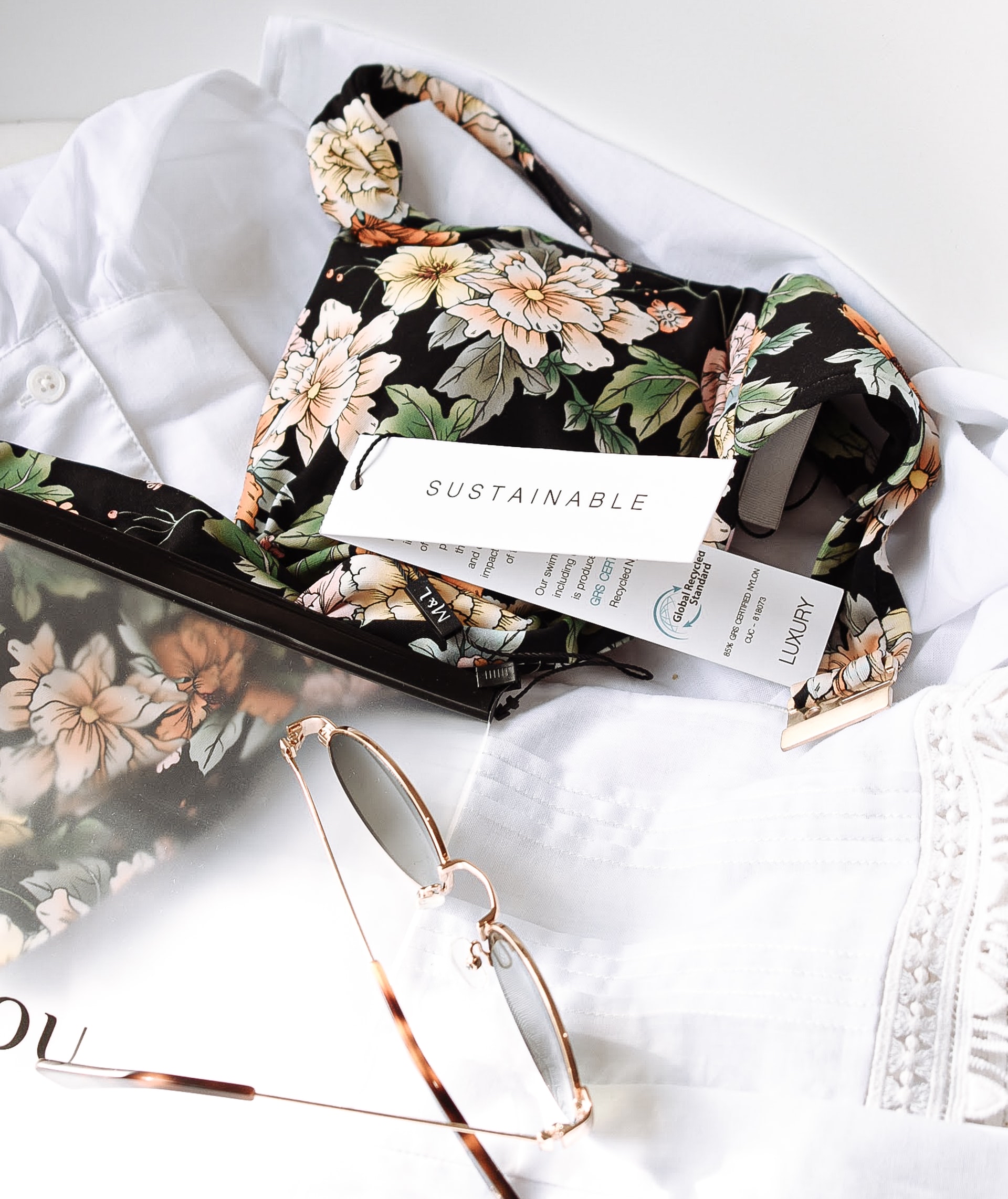 Ph. Jess @ Harper Sunday, Unsplash
Ph. Jess @ Harper Sunday, Unsplash
The environment versus high fashion, how will everyone protect it? And how will everyone deal with the consequences? Clothing can be made more eco-friendly but we can also choose second-hand vintage clothing found in charity and antique shops, as well as on websites like Vinted and Depop, which filter items based on affordability, preference, and like-ability.
There is no denying that in the fashion industry sustainability is the buzzword right now. It is about sending a statement to everyone and, in some ways, addressing all of the challenges that fashion and the environment have with each other, as well as producing a vital message to highlight, showcase, and encourage climate positivity. Biyya Mansoer has expressed in an article, ‘You are what you wear’, “the way we express ourselves through fashion can provide an influential platform to drive change towards more ethical and sustainable practices in fashion supply chains. Here is where self-expression through fashion has evolved into something bigger – a choice and our way of life.”
A study by Dunja Radonic on the ‘fashion discount’ has displayed the percentages are different in all age categories. For general statistics, “53% of men and 47% women in the UK buy from sustainable brands” and “mature women between the ages of 35-55 buy from sustainable brands”; therefore, this data demonstrates how sustainable trends are still snowballing.
Goal For Change
The changes required to combat climate change are possibly tricky but necessary. If something is at risk, it is bound to have a resolution. Sustainability is critical because it allows for positive change for the improvement of both people and the planet.
Special: Behind and Inside PUMA RE:SUEDE
Achieving circularity and sustainability has undoubtedly its challenges but the PUMA RE:SUEDE experiment showed that green footwear is not a wild dream anymore.
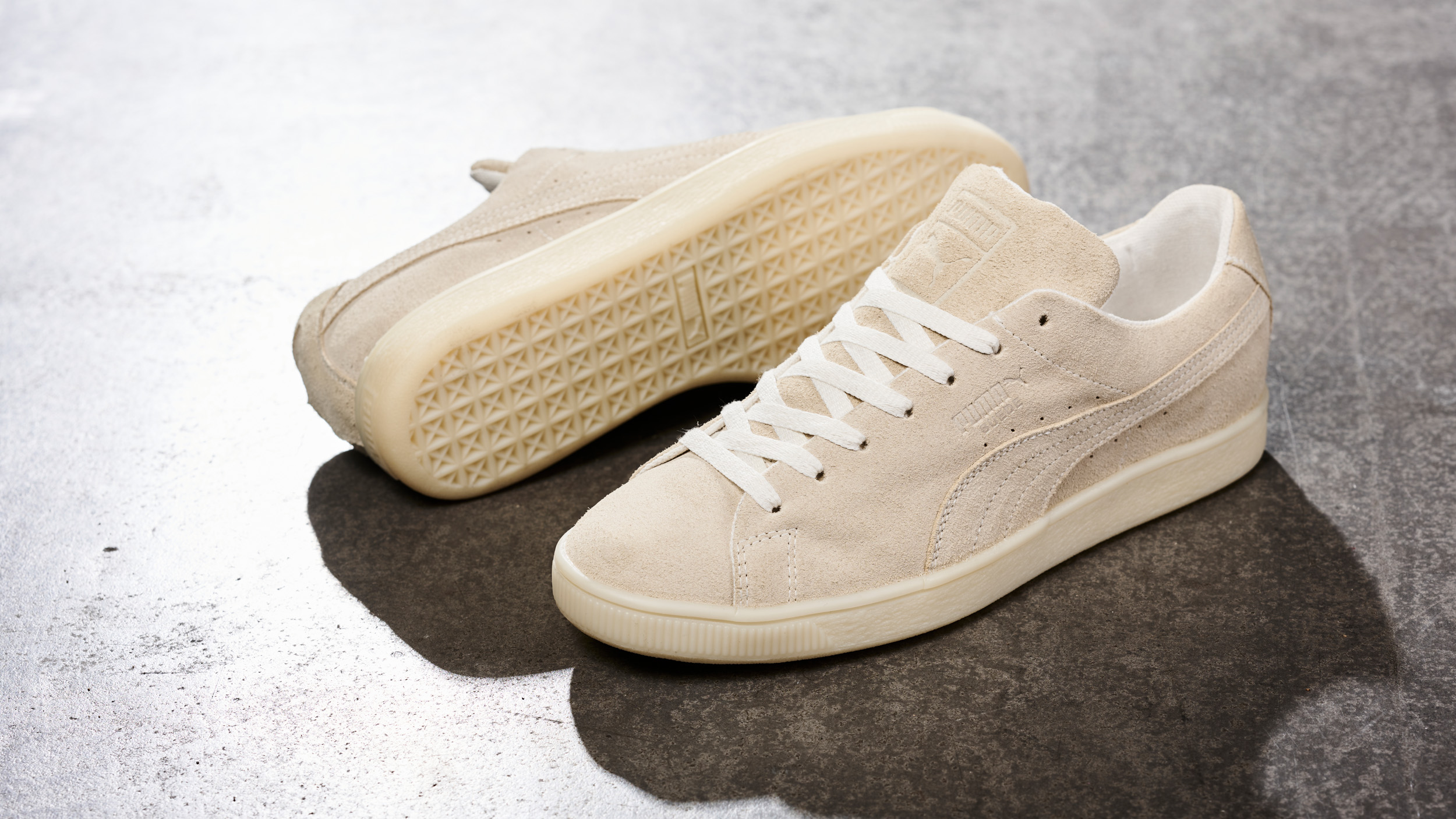 Photo courtesy of PUMA
Photo courtesy of PUMA
Fashions Finest got in the loop with PUMA creative and sustainability team directors to know more about the challenges behind ecological shoes.
Sustainable production techniques have been making great strides in the last decade. Green shoes are real but challenges, the aesthetic implications and public reception are true too. Heiko Desens, PUMA’s Creative Director, and Stefan Seidel, Head of Corporate Sustainability, told Fashions Finest more about the RE:SUEDE pilot experiment.
Q&A With Stefan Seidel, Head Of Corporate Sustainability At PUMA
 Stefan Seidel, courtesy of PUMA
Stefan Seidel, courtesy of PUMA
PUMA's first sustainable experiment dates back to 2012; it was quite futuristic for that time but very noteworthy. What did you learn from your first attempt?
Our InCycle collection was probably ahead of its time. We saw that it was important to ensure the products get sent back to us after their use phase.
We did have an instore-take back system in place back then, but it was not possible to specifically sort out our InCycle products for composting or recycling purposes. This is why we will have a very specific take-back offer in place for the RE:SUEDE.
Do biodegradable, unconventional and/or alternative materials impact the final design and aesthetic feel?
Some of the materials indeed look and feel different. For example, we purposely left the leather for the RE:SUEDE in its natural colour – to support the natural look and feel. But the RE:SUEDE is still as comfortable to wear as the “classic” SUEDE.
Can a single, trend-driven feature reduce the eco-friendliness of a shoe?
The eco-friendliness of a shoe is based on many aspects. Important criteria are the materials used, the environmental performance of the manufacturer who produces the materials and the shoe, the type of energy used during production, the mode of transport and ultimately how the shoe is treated at the end of its lifecycle.
A single feature can help to draw attention, but to be eco-friendly, a shoe needs to ideally address all of the above aspects.
What is the least sought-after material which, in your opinion, may open unexpected possibilities in the shoemaking industry?
Over the past years, we saw attempts using pineapple leaves, cork or mushroom-based materials for shoemaking. Those are interesting but very difficult to scale to mass volumes.
Personally, I believe we should make those materials more sustainable, which are already in use today, for example by eliminating fossil-based feedstocks. Some of our partners are experimenting with CO2 from the atmosphere as building blocks for polymers – that would be great, provided that those polymers can also be fully recycled or decomposed naturally.
What is the most impactful moment on the ecosystem in a shoe’s life cycle?
When we look at the product lifecycle analysis, then the material extraction and conversion has the biggest environmental impact.
The RE:SUEDE project shows your commitment and dedication to a better future. Considering that there is still work to do and areas with room for improvement, what is one key approach that any brand can take for greener production?
There are many areas that we need to focus on, so let me pick two:
We need to transition production to low carbon materials and renewable energy, to be able to tackle the climate crisis.
We need to answer the question of what happens to the products at the end of their lifecycle. Biodegradation is one possibility, technical recycling is the other one. Ideally, we should combine both.
Q&A With Heiko Desens, PUMA's Creative Director
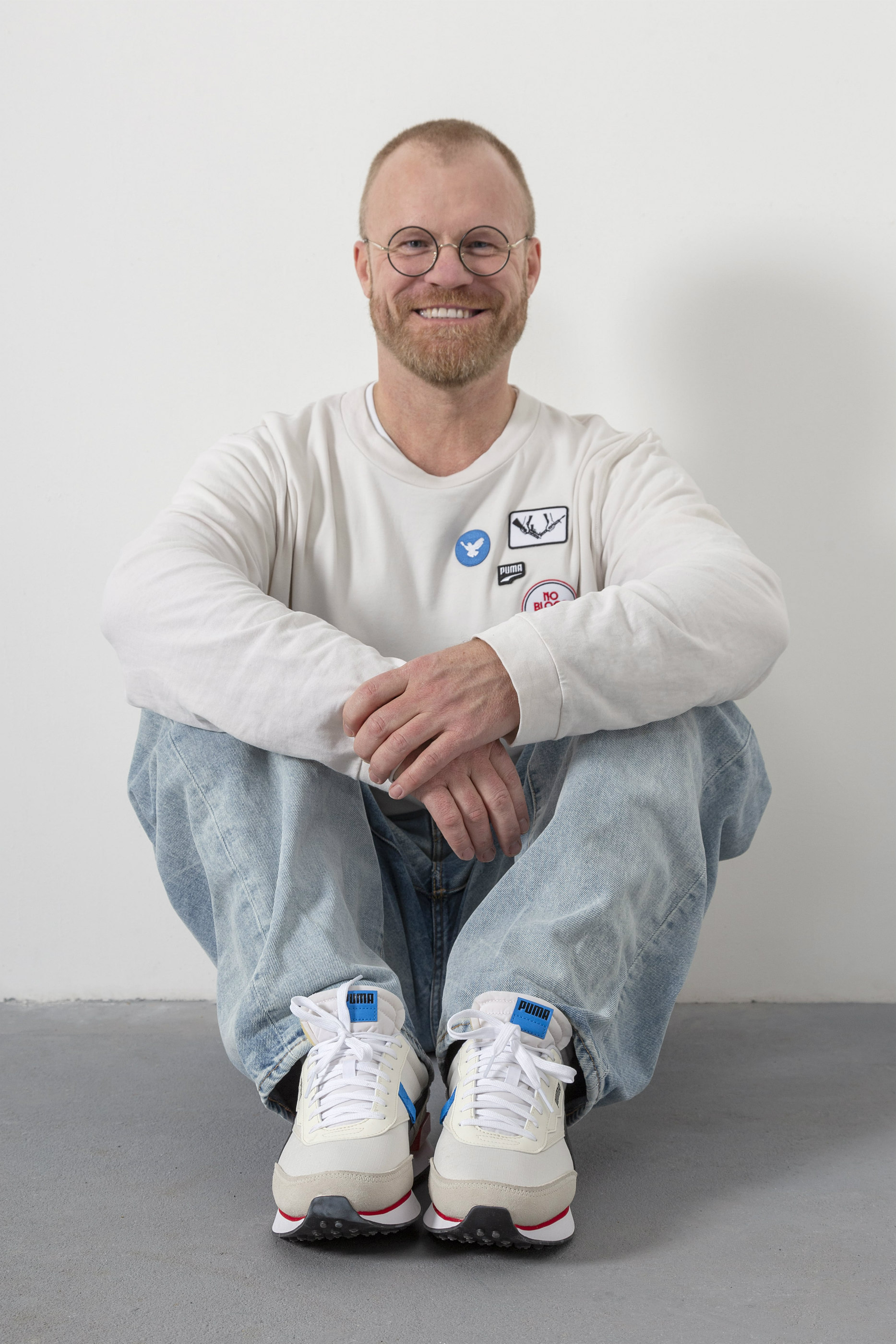 Heiko Desens, courtesy of PUMA
Heiko Desens, courtesy of PUMA
PUMA picked the SUEDE for its sustainable pilot project, but what makes this sneaker PUMA's real icon?
The Suede stands for timeless design that makes it different to a lot of high fashion sneakers. We chose the Suede because in theory you can wear it for many years and it always compliments any styling you go for and any occasion you wear it for. Doesn’t this make it an icon?
Everyone agrees on Gen Z being the most eco-conscious generation. Is circularity driven by the youngest or does PUMA have a less specific customer cluster in mind for the RE:SUEDE and future eco-friendly shoe models?
The Suede speaks to a wide consumer base and that gives us the freedom to choose who we are directing the message to. With the massive conversation around environmental issues nowadays, the topic is not just of interest to a younger generation, and it shouldn’t be. That’s why we chose the Suede for this project to generate interest in our RE:SUEDE project as much as possible.
How did your loyal customer base welcome the cooperation? Do you feel potential customers will value brands that take them so much into consideration?
We are still in the phase of evaluating the media/social feedback but we can proudly say that it has exceeded by far what we were hoping for. The next round of engagement with our loyal consumer base will start beginning of next year. This is when our project physically starts and consumers can register for the first round of RE:SUEDEs.
What is the biggest challenge encountered during the running project?
The biggest challenge was to meticulously identify and eliminate all potentially harmful elements from the materials and still maintain top quality and durability. Real sustainable materials are still not always easy to find. The next step was to make sure they pass established quality standards, so you can enjoy your product just the way you are used to for any other PUMA product.
To smartly communicate that the RE:SUEDE will not simply biodegrade in a conventional composting environment. It needs a specialized technical set-up.
In the future, our footprint will finally be lighter. Thanks to alternative, biodegradable materials and circularity experiments like PUMA RE:SUEDE this day will soon approach.
EVRYTHNG and Re-Fashion: Game-Changing Partnership for Sustainable Fashion
A brand-new partnership introduces circular and more transparent solutions to implement sustainability in fashion retail. EVRYTHNG and Re-Fashion collaborate with New Look to make a change happen.
Accessibility for fashion sustainability
Fashion has a deeper impact on the environment than we may actually think. COP26 is highlighting the urgency of the climate issue and setting important goals to reduce carbon emissions worldwide. However, it is not just the way brands source their raw materials and produce their goods but also our personal choices that can leave a dark mark on the ecosystem.


